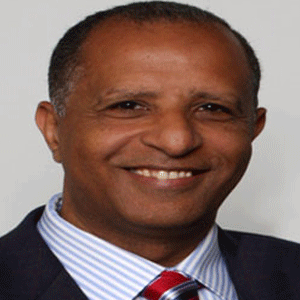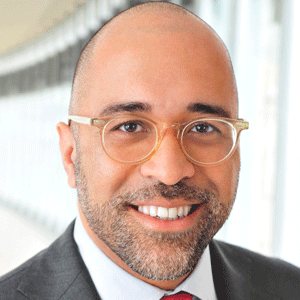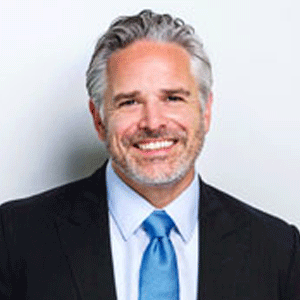THANK YOU FOR SUBSCRIBING

M2M:Who will lead and who will follow?
Medhat Mahmoud, Director-M2M solutions, Globecomm Systems


Medhat Mahmoud, Director-M2M solutions, Globecomm Systems
Call it machine to machine (M2M), internet of things (IoT), internet of everything (IoE), or simply the connected world; all refer to the same principle-the intelligent integration of information and communications technology systems into our daily lives' via machines, devices and sensors.
“In the cellular and mobile networks world, regional incumbents and global operators are moving strategically with full speed to gain as much market share as possible and to secure new revenue streams”
This "intelligent" integration is creating the industrial evolution of M2M, leading the way to actionable intelligence that provides enhanced productivity, higher efficiency, and better decision making processes. Eventually, it aims to achieve a “noble” objective, improving the human condition in one way or another.
M2M is also about the automation and digital transformation of existing processes, creating social and economic changes in our society. It introduces a shift in the traditional business and service models while generating new business value. This transformation touches all sectors and market verticals impacting our lives, such as transportation, retail, healthcare, farming and agriculture, safety, security, utilities, energy, environment and urban development such as smart cities.
M2M is a complex and fragmented ecosystem. The value chain is built around three main building blocks integrated together known as DNA (Device, Network and Applications integrated together). Devices include sensors and hardware that collect data to be processed to perform certain functions. The networks are generally wireless networks that transport data from the devices to the applications for processing. This data, now known as big data, is then processed through analytics products from companies like SAS, Accenture, Oracle, Dell and SAP to make it actionable, thus “intelligent”.
The wireless technologies used can be as simple as short range radio frequencies (RF) for small coverage area, public cellular networks 2G-3G-LTE for a wider range or global satellite for even greater coverage.
The M2M industry has evolved at a rapid pace over the last decade. Those who have witnessed the fast growth of this industry know very well, and possibly predict as well, how it will drive further growth and evolution in our lives. The actual M2M double-digits market growth rate is very attractive. The business potential and forecasting in terms of dollar value is expected to be in the hundreds of billions, involving network cellular operators, enterprises, devices, senosrs, wireless manufacturers and more.
In the cellular and mobile networks world, regional incumbents and global operators are moving strategically with full speed to gain as much market share as possible and to secure new revenue streams. Some operators are more advanced in this area and leading others
Satellite M2M is also gaining momentum and moving fast, steadily accelerating as the costs/bit get lower, providing a unique capability and new opportunity to enable M2M services where cellular networks can’t be offered.
Giant global corporations, companies like IBM, Cisco, Vodafone, AT&T, GE and Ericsson, to list a few, are also leading the race and moving quickly, significantly investing and contributing to the success of M2M, each from his own business angle.
M2M specialized platform technology providers such as Jasper, Wyless, Kore, Aeris, Axeda, Stream and others play a significant role in the advancement of the M2M industry.
Regulation and government influences are also impacting the M2M evolution, accelerating its growth.
A good example is how the European Union (EU) initiative to mandate e-Call, has fueled M2M growth, requiring all new cars to be equipped with technology enabling automatic emergency calls in the event of an accident.
Another good example is in Canada, where the Ontario Energy Board has developed a regulatory framework to implement smart meters in homes and small businesses.
The M2M evolution is also being embraced by the developing world. In some segments, it is outperforming in terms of annual growth. Countries like China, India, Brazil and the UAE are among the leaders taking steps in setting the stage for national roadmaps to accelerate M2M adoption.
One key question continually being asked, with all this is, what are the success factors that will further drive the growth and lead to success and faster adoption of M2M? Who will lead and who will follow?
There is no simple answer to that one million dollar question but I can offer some possible options. First, let’s go back to the definition of M2M. It’s the integration of different building blocks with various technologies to create a useful solution that intelligently addresses intrinsic issues in our society, fixes a problem, enhances productivity, or improves an outcome. The more innovative the integration is the greater the chances of success.
Yes, innovation has been a major driving force for the M2M evolution, although it is the least discussed. It's important to define this innovation as both technology and business combined together in one cycle. This innovation cycle is what enables the industry leaders to stand out of from the crowd, moving from vision to a growing business.
Let’s take an example of M2M applications in the “automotive” segment. It started as a simple idea to lock, track or start your car using cellular technology. The concept has evolved through various innovations to create new useful applications serving the users and changing the way they use the technology. It has evolved to predict driver behaviors, speeding patterns and location awareness. Driving-centric apps have been developed, and are emerging every day. These apps proactively and dynamically inform drivers and recommend optimized routes to reduce fuel consumption, avoid high traffic or hazardous routes, resulting in lower CO2 emissions, costs and more safe travel.
Obviously, this has led to a shift in other related market segments, such as the auto insurance. The car owner can now dynamically pay his insurance based on his driving behavior and use, not on a fixed rate, leading to decreased insurance costs based on a new set of data parameters provided, such as “good driving behavior” and distant travelled.
The auto evolution is still developing, creating new valuable objectives such as the collision-free driving environment, or ultimately the self-driving car concept where driving safety is redefined.
Technology innovation triggers business innovation which, in return, feedbacks technology innovation, creating a healthy, successful innovation cycle.
Business and technology innovation grow hand-in-hand, and have to be strategically cultivated with the right vision for top-line growth. This type of innovation doesn't happen overnight. It requires a shift in the organizations mindset and leadership style. Entities across the ecosystem value chain need to collaborate and develop in conjunction with each other focusing on partnerships. More importantly, the innovation cycle requires a vision that is backed up with a deep and solid understanding of the market needs and M2M industry dynamics.
M2M has plenty to offer for those who will adopt innovation on a day-to-day basis, and are open to create a new innovative business culture. The innovators will be among the leaders in this exciting space, M2M, IoT, IoE or connected world, whatever you call it.
Weekly Brief
I agree We use cookies on this website to enhance your user experience. By clicking any link on this page you are giving your consent for us to set cookies. More info
Read Also
Navigating Compliance Challenges in ESG AML and Digital Onboarding
A Vision for the Future: Automation, Robotics, and the Smart Factory
The Rise of Hyper Automation
Transforming Business Operations with Robotic Process Automation
Combining Automation with AI to Achieve Human-Like Interaction
Implementing RPA - 5 Ultimate Prerequisite
Incorporating the power of recognition into our vendors' sustainability journey
Elevating Guest Experience with Data





















